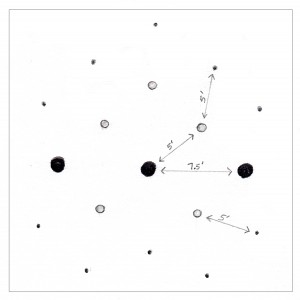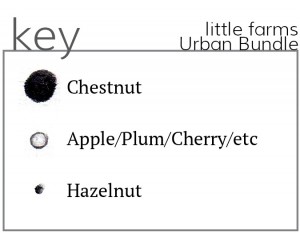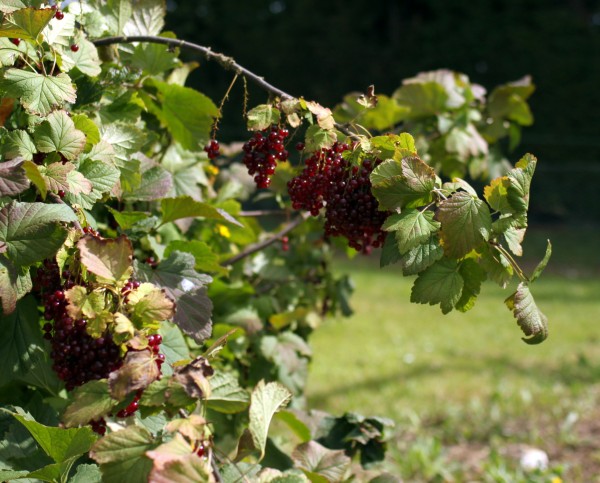Mark Shepard, author of Restoration Agriculture and founder of Restoration Agriculture Institute, presented the workshop "Designing Your Perennial Farm" at the 2013 Ohio Ecological Food and Farm Association (OEFFA) conference. Below is the summary of what I learned today.
Fundamentals of Restoration Agriculture


The key principle of Restoration Agriculture is to observe nature and imitate it to grow edibles. This requires a concept shift and constant questioning of oft-repeated 'facts'. "Apples don't have concepts of orchards," Shepard said. In a perennial polyculture, apples can grow among companions that reduce pest pressure and mowing needs.
He advocates for planting over-yielding polycultures. Instead of a one-acre monoculture of apple trees, say, plant peppers, sunflowers, squash, and chestnuts on the same acre. While each crop might not yield as much as if they had been babied in an acre of their own, the polyculture will yield more in sum than what a single acre of any one crop could provide. This method 'fattens up' the ecological system to create more edible niches.
Grazing animals are important parts of the system. Cattle, pigs, sheep, and chickens all can contribute to the soil nutrients, waste clean-up, and pest control among polycultures.
Shepard proposes a STUN method of farming - Sheer Total Utter Neglect. Let natural processes take over and what remains will be stronger plants more well-adapted to their micro-environment. When the whole farm is a wildlife habitat, natural predators will control pests and add vibrancy to the system. A restoration agriculture farm may take excess attention in the beginning years while developing waterways and planting but then plants can be strategically abandoned.
"Accept feedback," he urges. "There are no mistakes. Only feedback." What may look like a failure or problem is likely only an undiscovered opportunity. Apples, for instance, dislike weed competition at their roots. Shepard plants daffodils, comfry, and iris under his apples and ends up with strong fruit trees and a secondary cash crop of cut flowers, comfry greens, and iris bulbs.
Planning A Perennial Farm
To design a perennial farm, one must identify biomes and keystone areas, manage water and earthworks, establish edible woody polycultures, and build fences and access roads. Plan to capture all the water that falls through small ponds and swales. Typically these will follow a meandering or gently rounded pattern with slopes no more than 1%.
Polycultures include planting top story trees like oak, chestnut, pecan, black walnuts, and beech with smaller edible trees like apples, plums, peaches, and cherries underneath. Next come hazelnuts and berries. Fungi, animal forage, and herbs grow in the understory. These perennial edibles work with nature, are adaptable to many growing conditions, and designed to be coppiced for height control.
Shepard recommends planting an excess of trees to allow self-selection of individual trees that are suited to the particular location. He advises ditching the concept of large planting holes with exacting soil mixes and instead recommends using a hoedad tool to plant trees quickly.
In between woody polycultures, plant annuals. These alley crops can sustain a farm financially until perennial edibles are harvestable. In this way, agrofrestry creates future yields while increasing yields today.
Restoration Agriculture Results
When one grows in the Restoration Agriculture way, expect these outcomes:
- 3-7 times more energy capture per acre
- improved resource base
- perennial plants that reproduce themselves
- no plowing, cultivating, disease/pest treatment once established
- year-round harvest of multiple yields
- no erosion
- non-toxic environment
- beauty in diversity
Shepard concluded his talk by urging the audience to "Put your life to good use! Create oxygen, water, food, shelter and beauty!"
Soon, I will share our plans to put our life and land to good use following some of the Restoration Agriculture principles. I also will share more wisdom picked up at the OEFFA conference.
 I've long been inspired by the permaculture movement. It just makes sense to invest time in longer-growing, diverse groups of plants because work in the present can benefit for years to come. When I read Mark Shepard's Restoration Agriculture
I've long been inspired by the permaculture movement. It just makes sense to invest time in longer-growing, diverse groups of plants because work in the present can benefit for years to come. When I read Mark Shepard's Restoration Agriculture







